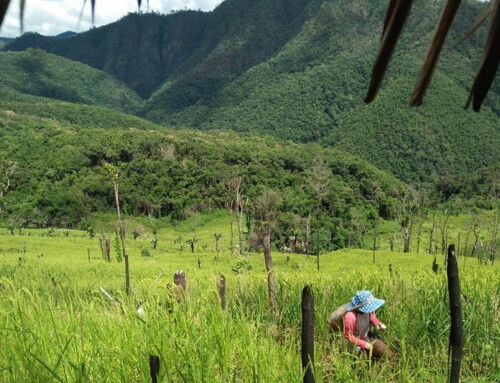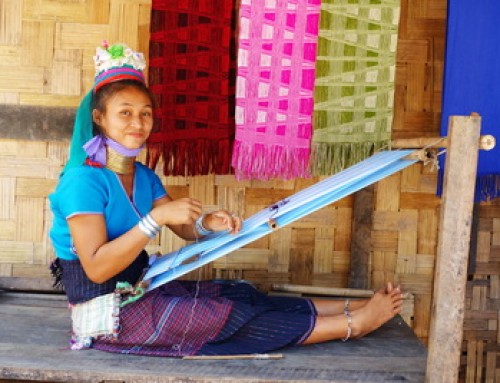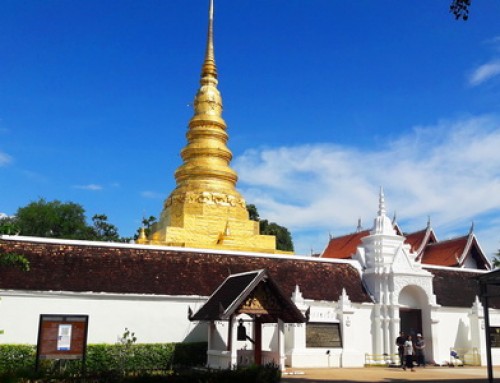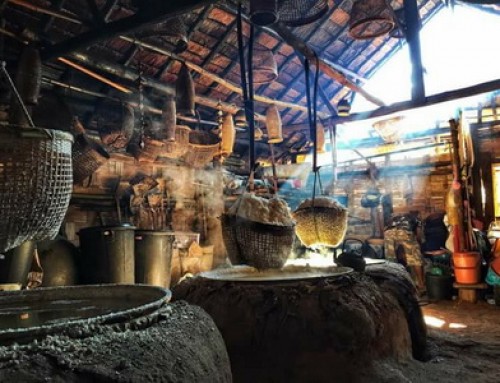Yao or Mien Hill tribe Information

The Mien Culture/Groups
Evidence of Mien (Yao) history as far back as 5th BC. For the past 2000 years, the records show that the Mien lived in the surrounding mountains near Tibet. The Mien moved constantly because they did not like the controlling ruling from the Han. There were as many as 28 sub-names under the Mien. There were 4 major groups of Mien, the Phan (Bienh), the Bunu, the Cha Sun, and Ping Ti. Out of the 4 groups, the Phan (Bienh) group had the most man-power, and that was the group that constantly moving from place to place. The Phan group had concentrated in one large area of the country, where the Mien language was developed. The Bunu and the Luc Jaa developed into separate languages.

Legend of the Creation of the Mien People
In heaven, there were Daa Ong (Grandfather) and Daa Gux (Grandmother). One day they decided to create the Yao, or the Mien people. They planned to transform themselves and live on Earth . During that time, there were two kingdoms already exist on earth, one ruled by Baeng Hung (the good side), and the other by Gux Hung (the bad side). They hated each other very much .
As they two had planned in heaven, Daa Gux would come down to earth reborn as a third daughter of Baeng Hung (with a birthmark on one leg), while Daa Ong would transform himself into whatever was needed. During the war between Baeng Hung and Gux Hung. Baeng Hung announced to his whole kingdom, “whoever can bring me Gux Hung’s head, I’ll reward you with marriage to my third daughter and some land .” No one answered the Baeng Hung’s demand.
One day Daa Ong transformed himself into a five-colored dragon-dog named Phan Hu. The dog showed himself up at Baeng Hung’s palace. The emperor had never seen a dragon-dog such as this one, full of talent, with 120 beautiful spots on the top of its body, and could talk . The emperor ordered his people to take a good care of the dog. The dog had become Baeng Hung’s trusted, loving pet.
One day, Baeng Hung and his staff had a meeting, planning the war with Gux Hung. The dragon-dog was there at the meeting as well. At the end of the discussion, the dragon-dog spoke up, he said “Baeng Hung doesn’t have to send thousands of armies, military equipments to fight Gux Hung. I will volunteer to fight Gux Hung myself. Since I’m a dog, the least respected animal, Gux Hung and her military probably will not think I can cause any harm to them.” Baeng Hung agreed with the dog. He wanted to see what the dog could do.
Phan Hu (dragon-dog) prepared for the departure. He asked heaven to send him a magic pill, which helped him endure his 7 days 7 nights swimming accross the sea to Gux Hung.
The dragon-dog arrived Gux Hung’s empire. Gux Hung admired the beautiful talking dog. She kept it as her own body guard. The dog became Gux Hung’s favorite pet as well. Gux Hung was confident with the dog, therefore, she no longer needed her servants and body guards at all times. One day, Gux Hung sent her servants and body guards out for the daily chores. The dragon-dog took that opportunity, and bit Gux Hung’s head off then swam back across the sea with the head as proof to Baeng Hung. In return, the dragon-dog was married to Baeng Hung’s third daughter (as promised).

As the wedding day neared, Baeng Hung, the emperor realized he didn’t really want his third daughter to marry a dragon-dog. So, Baeng Hung called nine women who looked identical to his third daughter and then dressed them up with identical gowns. The dragon-dog had to pick from the ten identical women. Daa Gux (the third daughter) was one of the ten. This ruse, however, did not fool Daa Ong a.k.a. Phan Hu (dragon-dog). The dog looked for the birthmark on the leg. The dragon-dog picked the third daughter of Baeng Hung and was married to her. They moved to an isolated piece of land given to them by Baeng Hung and had 12 children, six sons and six daughters. These six sons and the husbands of the six daughters became patriarchs of the twelve Mien clans.


Clothing and Dress
When you see the women wear a black shirt and a red fluff around their neck and wear a black pant with many stripes assemble around to sew the clothes. You will know this a Mien village.


Mien dress
Mien wear a long pants with many stripes and a cloak to the ankles. Around their neck has a knitting wool, has a clothes on the waist, wrap the head. Wrap the head has two steps, the first wrap by the clothes and the second wrap a stripes clothes cover on the first, it has two forms, the first is a big head and a headland and the Mien people wrap their head even they sleeps.
Mien women wear a black long pant with many beautiful stripes. The stripes take a long time to make like 1-5 years depending on the detailed and a time of Mien women.
That why Mien would like to show the stripes that they take a time to make it. They keep the end of the shirt 2 side to tie on the back and use another cloth to be a belt. They use black cotton to make a dress event a cloak will use from a textile. The Mien stripe in the villages depend on the people in the village to like it.
A men’s dress
A cloth for Mien are a undershirt. Wear with a short pant, a shirt and pant made from a navy blue cotton or a black cotton. The older wear a velvet cloth when the village has a ceremonial.
A child cloth, similar to the elder, a child will has a small group of color like a do not have a stripe on the pant because her could not preserve or keep it clean. For a boy be the same the elder man, a boy has a cap such as a girl also but has a small detail different like a boy sew by alternate a black and a red cord.
A master dress in the ceremony
Mien people take essential for a cloth to wear in the ceremonial, A Mien women will take respond this to sew this cloth. The cloth similar to a Tao graven (Mien) that Mien people give respect. Before ordain, Mien women prepare a cloth. The way of sew a cloth for. The Master who will take a role to be a ceremonial and the people who attend the ceremony.
The ornament
Mien people very famous about make a silver because Mien to like to use a silver the same other hilltribe and a form of ornament is labored. When in the village has a ceremony, the women will adorn the silver ornament with full option.
To dress the clothes
The way to make a dress, sew and use the color to make a stripes for a wares in daily life and in the ceremonial especially in the ordain (Gwatung) and in the wedding like a veil for a woman in the big wedding. The favor for Mien like to stripes is a bag to carry a baby and a wallet, the thing that Mien people to dress in this like twine a cord to catch up the shirt, This is the old way of Mien tribe that influence from China.
Usually Mien people who like to wrap the head like a cape to like to patch up. For women will use a red ball tassel long line and a small beads for a ball tassel made from a red knitting wool a couple string to stick in the side of a women shirt about a wrist.
Where do they live?
In Thailand Yao hill tribe settlements can be found in Chiang Rai, Phayao, Nan, Lampang, Chiang Mai, Phitsanulok and Kamphaeng Phet provinces. Most likely you will meet them in Chiang Rai province.












Amazing I’ve reached this age before I’ve found out about this tribes, respectfully amazing.
Did the Hmong Mien people always live in the mountains? Or did they originally live in valleys before being pushed to the mountains by the Han Chinese?
The Hmong-Mien people, known in Thai as ชาวม้ง-เมี่ยน, have a long history closely tied to Southeast Asia and southern China. Historically, their origins trace back to the Yangtze River valley in China, where they lived in fertile lowland areas. Over centuries, due to conflicts and pressure from the expansion of Han Chinese civilization, they were gradually displaced and migrated southward into more remote, mountainous regions.
In Thailand, the Hmong (ม้ง) and Mien (เย้า) are prominent ethnic groups, primarily residing in the northern highlands. They migrated into Thailand around the late 19th and early 20th centuries from Laos and southern China, seeking refuge from political unrest and war. Traditionally, they practice slash-and-burn agriculture, grow crops like rice and corn, and are known for their vibrant textiles and cultural ceremonies.
Today, the Hmong-Mien people in Thailand maintain their unique identity while integrating into Thai society, contributing to the country’s cultural diversity.